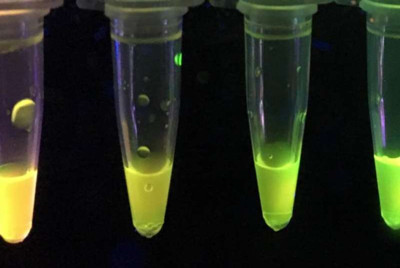
A new, paper-based sensor developed by University of Alberta chemists can detect two potent nerve toxins that have reportedly been used in chemical warfare.
The sensor uses silicon-based quantum dots to detect paraoxon and parathion, two powerful toxins that turn the paper sensors yellow or green depending on the amount of toxin present.
The study also shows that a commercial smartphone application can be used to accurately estimate the amount of the toxins in a sample, which could offer a simpler, faster way to detect them than current methods that require costly instruments and highly trained technicians.
"Paraoxon and parathion are nerve agents that have been used as pesticides," explained U of A chemist Jonathan Veinot, who was a co-author on the study with Ph.D. student Christopher Robidillo.
"Accurate detection is important because these substances are potent—they can kill within minutes depending on exposure and treatment."
Since parathion was developed in 1947, most countries around the world—including Canada and the United States—have stopped using it as a pesticide, said Robidillo, citing research showing it has also been linked with cancer and birth defects.
Paraoxon, a similar compound that is created when parathion is broken down by enzymes in the body, is considered 50 times more toxic. It is thought to have been used in chemical warfare during the 1970s in what is now Zimbabwe, and later by the apartheid regime in South Africa as part of its chemical weapons program.
To build the sensors, the research team combined a green fluorescent protein with silicon-based quantum dots that emit red light. When exposed to paraoxon or parathion, the mixture no longer emits red light, causing the sensor to turn various shades of yellow or green under fluorescent light.
"The sensors can be used to test environmental samples and detect the presence of the nerve agents," added Robidillo. "Using a smartphone application, it is possible to estimate the amount of nerve agent present; this is more reliable than simple visual evaluation."
Veinot said the results suggest that similar sensors be tailored to test for other toxins as well.
"It's a platform we're building on that could eventually be used to detect multiple substances at once."
The study, Ratiometric Detection of Nerve Agents by Coupling Complementary Properties of Silicon-Based Quantum Dots and Green Fluorescent Protein," was published in ACS Applied Materials & Interfaces.

